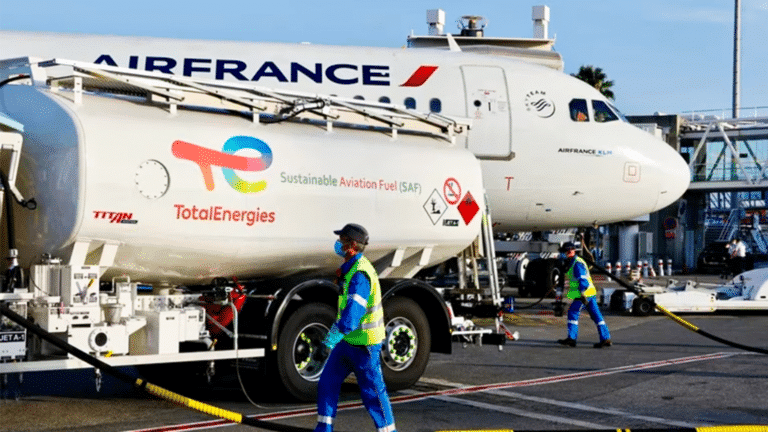Consejos para mejorar la aerodinámica de tu coche
Aerodynamics is a fundamental aspect of the performance of any vehicle. An optimized aerodynamic design not only improves the stability of the car at high speeds but also translates into lower fuel consumption. Small adjustments in the way you interact with your vehicle can make a significant difference in its efficiency. In this article, we will explore some practical tips that will help you improve your car’s aerodynamics, thus maximizing its performance and fuel savings.
Tips to Improve Your Car’s Aerodynamics
Your car’s aerodynamics is a crucial aspect that directly influences its performance and fuel efficiency. Good aerodynamics not only reduces air resistance but also improves the vehicle’s stability, especially at high speeds. In this article, we will analyze various practical tips you can follow to optimize your car’s aerodynamics, thereby contributing to better fuel savings and a more enjoyable ride.
Keep the Windows Closed
When driving at high speeds, opening the windows may seem like a good idea, but it actually creates additional resistance that can cause the engine to work harder. Keeping the windows closed is one of the simplest changes you can implement to improve your car’s aerodynamics. This reduces turbulence and facilitates air flow around the vehicle.
Avoid Unnecessary Loads
Unnecessary load in your car can increase its weight and negatively affect aerodynamics. It is advisable to remove superfluous objects from the trunk and any accessories that protrude from the vehicle, such as roof racks or empty trunks. The cleaner and lighter your car is, the less wind resistance it will have.
Optimize the Vehicle Shape
Some vehicles come with aerodynamic features designed to reduce air resistance, such as spoilers and wings. If your car does not have these features, consider installing accessories that can help smooth the airflow. For example, a front wing can prevent a large amount of air from entering the underside of the vehicle, helping to maintain laminar flow around it.
Keep the Car Clean
The accumulation of dirt and mud can interfere with the natural airflow around the car. A clean exterior not only improves the appearance of your vehicle but also optimizes its aerodynamic efficiency. Make sure to wash your car regularly, especially in areas where dirt or sediment can accumulate, affecting air resistance.
Check the Tire Pressure
Tires are a critical part of your vehicle’s aerodynamics. Keeping them at the correct pressure is vital not only for your safety but also for reducing rolling resistance. Well-inflated tires allow the car to move more smoothly, thus improving its efficiency and reducing fuel consumption.
Research Automotive Technology
Automotive technology is constantly advancing, and many new features are specifically designed to improve aerodynamics and vehicle efficiency. Stay informed about the latest updates and advancements in this field. For example, some new cars use systems designed to adjust aerodynamics in real-time, depending on speed and driving conditions.
Understanding how aerodynamics influences your car’s performance and fuel consumption is essential in a world where fuel economy is vital. By following these practical tips, you will not only improve your car’s aerodynamics but also enjoy a more efficient and pleasant ride. For more information on how to effectively reduce fuel consumption, visit this link.
If you are interested in learning more about the latest innovations in automotive technology, feel free to check here to stay updated on the latest. You can also discover new changes in popular models, such as the Tesla Model Y, which has recently increased its price due to technological updates.
Finally, to learn about the best travel practices that can help decrease gasoline usage, visit this article that provides additional information on how to make your journeys more efficient and less costly.
Additionally, it’s worth noting how models like the BMW M5 Touring offer appealing power options and aerodynamic design, making them an interesting choice for driving enthusiasts seeking to optimize their experience.
Tips to Improve Your Car’s Aerodynamics
Improving your car’s aerodynamics not only optimizes its performance but can also result in significant fuel savings. Over time, it has been proven that air resistance is a determining factor in gasoline consumption, especially at high speeds. Therefore, implementing strategies to reduce this resistance is crucial.
One of the simplest and most effective tips is to keep the windows closed while driving. Opening the windows can cause turbulence that significantly increases wind resistance, forcing the engine to work harder and consume more fuel. Also, keeping the car clean and free of unnecessary objects will contribute to improving its overall aerodynamics.
In addition, consider installing spoilers and wings, which are specifically designed to enhance airflow around the vehicle. These aerodynamic improvements can be especially useful for those looking to increase stability and performance on the road. Additionally, using low-profile tires can help reduce resistance.
Other aspects to consider include adjusting the tire pressure according to the manufacturer’s recommendations and regularly inspecting the vehicle to ensure that all components are in good condition. A well-maintained car has optimal performance in terms of fuel efficiency.
Finally, staying informed about new technologies being developed in the automotive field can also offer you advanced options to improve your car’s aerodynamics. Thus, you will not only be contributing to sustainability but also enhancing your driving experience.




